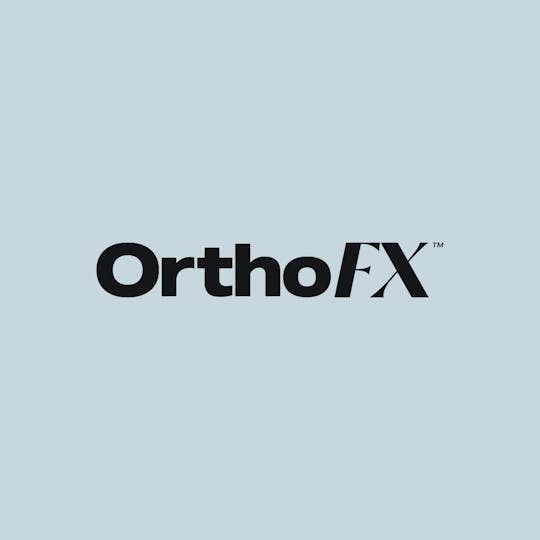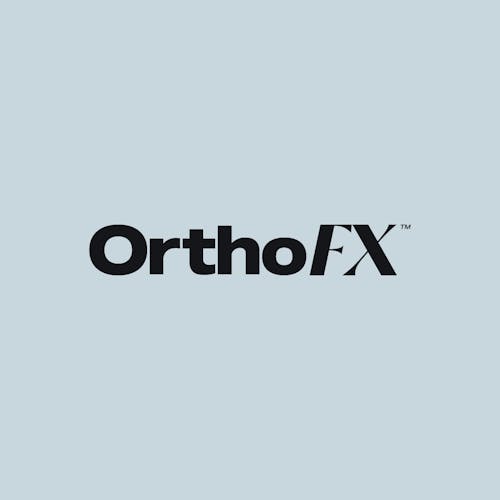Clear aligners are among the most popular solutions for teeth straightening today. But the question many patients ask is, Are Clear Aligners covered by insurance? While the cost can be a concern, insurance can significantly reduce out-of-pocket expenses, especially when you go through in-person providers like OrthoFX.
In recent years, the demand for clear aligners has surged, not just among teens, but also among adults seeking a more comfortable and discreet alternative to traditional metal braces. These aligners are nearly invisible, removable, and tailored to each patient’s smile, making them an appealing option for a wide range of lifestyles.
However, one of the most common concerns people have before starting treatment is whether their insurance will cover it, and if so, how much. Dental insurance policies can vary widely, and understanding the details can help patients make informed decisions about their orthodontic care.
The good news is that many insurance providers are beginning to include clear aligners as part of their orthodontic coverage, particularly when treatment is recommended by a licensed dental professional. Let’s explore what coverage really looks like in the U.S. and how to make the most of your benefits.
Are Clear Aligners covered by Insurance in USA
If you are in the U.S., the answer is often “yes”. Clear Aligners are covered by insurance, especially when the treatment is supervised by a licensed dentist or orthodontist. Insurance typically pays for a certain percentage of orthodontic care or up to a fixed lifetime benefit. The coverage can significantly reduce out-of-pocket expenses, making clear aligners more accessible to individuals and families seeking a more discreet alternative to traditional braces.
Here are a few important things to know:
- Some policies* include age restrictions, limiting orthodontic coverage to dependents. Many dental insurance plans provide orthodontic benefits primarily for children and teens. Adult coverage may be available, but it often depends on the type of plan or the inclusion of orthodontic add-ons.
- Benefits are stronger with in-office treatment than mail-order kits. Insurance companies typically favor and reimburse treatments that involve direct supervision by dental professionals. In-person treatment not only ensures safety and effectiveness but also meets clinical guidelines that insurance companies require for claim approval.
- Plans may require prior authorization before starting. This means your dentist or orthodontist may need to submit records or treatment plans to your insurance provider for approval in advance. Skipping this step can result in denied claims or reduced reimbursement, so it’s important to clarify these requirements early.
- OrthoFX helps patients check coverage and understand eligibility before beginning treatment. The OrthoFX team works with you to verify your insurance benefits upfront. They’ll help you understand how much of the treatment is covered, what portion you’ll be responsible for, and whether you can apply HSA/FSA funds to further lower your costs.
Dental insurance that covers Aligners for adults
Many adults are unsure whether their plans apply. Fortunately, dental insurance that covers aligners for adults is becoming more common, especially with premium plans or orthodontic riders. While orthodontic benefits were once largely reserved for children and teens, today's dental plans are evolving to accommodate adult patients who want to improve their smile and oral health.
Plans that may include adult aligner coverage:
- Employer-sponsored dental insurance - These plans often provide more robust orthodontic benefits, especially if offered through large organizations or unions.
- Individual PPO plans with orthodontic add-ons - PPOs typically offer more flexibility when it comes to provider choice and may allow partial reimbursement for adult orthodontic treatment, including clear aligners.
- High-tier policies that don't restrict by age - These comprehensive plans may fully or partially cover aligners for adults without requiring proof of medical necessity, making them ideal for cosmetic and functional corrections alike.
OrthoFX ensures patients get a clear breakdown of insurance coverage before making any payment decision. Their team handles the complex parts of insurance verification, helping you avoid surprises and giving you peace of mind before you begin treatment.
Dental Insurance that covers Invisible Aligners
Are Invisible Aligners covered by insurance? Yes, when prescribed by a provider and backed by an orthodontic diagnosis. This typically applies to doctor-directed Clear Aligners like those from OrthoFX, not direct-to-consumer kits. Insurance providers are more likely to approve coverage when the treatment includes professional oversight and documentation, which ensures both safety and effectiveness.
Why insurance covers OrthoFX:
- Treatment is delivered in-office or monitored remotely by professionals - This ensures that your progress is carefully tracked and any necessary adjustments can be made in real time, improving both treatment outcomes and insurance compliance.
- Custom aligners are created with FDA-approved materials - This level of quality meets the strict standards required by insurance providers, making reimbursement more likely compared to generic or mail-order aligners.
- Ongoing check-ins meet insurance documentation standards - Regular assessments not only ensure your smile is on track and responding well to treatment but also generate records that help validate your treatment for insurance purposes.
- Plans may also let you use Health Savings Accounts (HSA) or Flexible Spending Accounts (FSA) for added savings - Using these pre-tax funds can significantly reduce your personal financial burden, especially when combined with partial insurance reimbursement.
Overall, invisible aligners prescribed by dental professionals like those from OrthoFX provide both clinical and financial advantages, making them a strong option for patients seeking insurance-supported orthodontic care.
Best Dental Insurance for Aligners
Choosing the right plan matters. Here's how top providers stack up when it comes to the best dental insurance for aligners:
1. Does Blue Cross insurance Cover Aligners
Blue Cross plans often provide orthodontic benefits, especially for dependents. Some adult plans cover 40–50%** of aligner costs, depending on your region and policy tier.
2. Does Delta Dental Cover Aligners
Delta Dental is widely accepted and includes clear aligners covered by dental insurance in many of its PPO and HMO*** plans. Coverage amounts and age limits vary by plan.
3. Does Medicaid Cover Aligners
Medicaid coverage** is limited and typically applies only to children when teeth straightening is medically necessary. Adult coverage is uncommon and varies significantly by State.
Clear Aligners Providers that Accept Insurance
Patients often search for invisible aligners that accept insurance. While aligner providers don't directly bill insurers, companies like OrthoFX guide patients through the reimbursement process, helping reduce delays and uncertainty.
What OrthoFX offers:
- Pre-treatment insurance verification
- Direct support with claim submission
- Transparent costs and payment plan options
Conclusion: Know Your Options, Maximize Your Benefits
Clear aligners can be a powerful, discreet way to transform your smile. With insurance coverage more accessible than ever, you can choose in-office treatments backed by dental professionals to help you achieve your dream smile. If you're considering starting orthodontic treatment, ask your dentist about OrthoFX. With our personalized care, insurance-friendly support, and advanced aligner technology, it's a smart choice for both your smile and your budget.
Don’t have an orthodontist yet?
Visit our Find a Doctor page to connect with a trusted OrthoFX provider near you and take the first step toward a straighter, healthier smile.
**Sources: **
- *https://www.guardianlife.com/dental-insurance/does-dental-cover-braces-for-adults
- **https://wrightortho.com/orthodontic-insurance-coverage-for-adults-with-bcbs/#:~:text=Generally%2C%20orthodontic%20care%20for%20adults,lingual%20braces%20and%20clear%20aligners.
- ***https://www1.deltadentalins.com/brokers/insider-update/2022/adult-ortho-faq.html
- ***https://humblememorialdental.com/innovations/does-delta-dental-cover-invisalign/#:~:text=The%20answer%20is%20yes%2C%20but,plans%20will%20cover%20Invisalign%20specifically.
- ****https://www.chcs.org/media/Medicaid-Adult-Dental-Benefits-Overview-Appendix_091519.pdf

